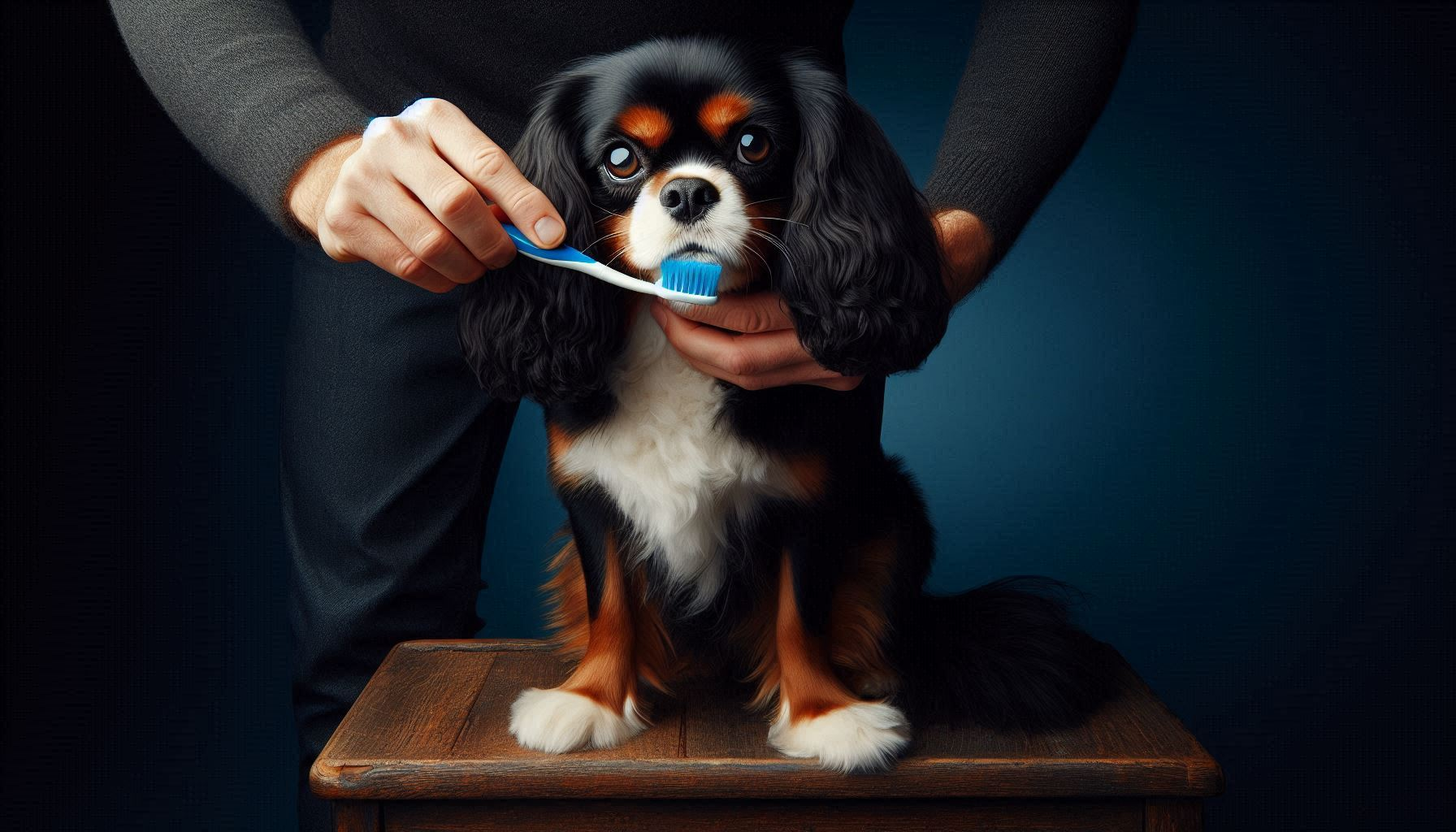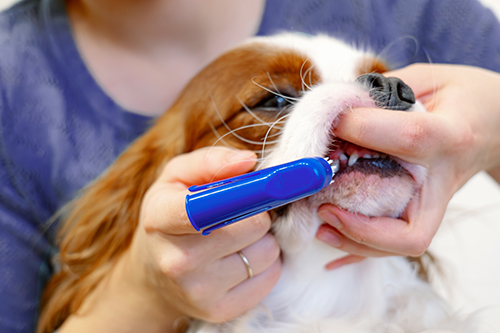
Dental and Periodontal Disease in Dogs
Dental and periodontal disease is among the most common conditions affecting dogs, but it is completely preventable. Studies show that over 80% of dogs aged three and older suffer from active dental disease.
Dogs can develop many of the same oral diseases that humans experience. However, while tooth decay (cavities) is the most prevalent dental problem in humans, periodontal disease is the leading issue in dogs. Tooth decay accounts for less than 10% of canine dental problems, with periodontal disease and fractured teeth being far more common.
Dogs often display few visible signs of dental disease beyond bad breath, plaque buildup, and tooth discoloration. Unfortunately, by the time professional cleaning or periodontal therapy is performed, the disease may have already advanced. Periodontal disease is generally under-treated in dogs and can lead to further health complications. Bacterial infection from the gums can enter the bloodstream (bacteremia), potentially damaging vital organs, including the heart—a significant risk for breeds like Cavaliers.
What Causes Periodontal Disease?
Periodontal disease occurs when bacteria infect the tissues surrounding the teeth, causing inflammation in the gums, ligaments, and supporting bone. Left untreated, this can lead to tooth loss due to the destruction of supporting structures. Gum disease is the leading cause of tooth loss in dogs.
The root cause is the accumulation of bacteria (plaque) along the gumline. As bacteria multiply below the gums, their waste products—like hydrogen sulfide and acids—start to damage the surrounding tissue. The dog’s immune response to the infection can further contribute to tissue breakdown, which ultimately affects the tooth’s supporting structures. There are two stages of gum disease: gingivitis and periodontitis.
Gingivitis is the early stage, where the gums become inflamed due to plaque but the ligaments and bone remain unaffected. Symptoms include a change in gum color from pink to red or purple, swelling, and bleeding gums. Bad breath is also common. Gingivitis is reversible with proper cleaning, but if left untreated, it can progress to periodontitis.
Treatment for gingivitis involves a thorough professional cleaning while the dog is under anesthesia, with special attention given to cleaning below the gumline. If the condition persists, a more extensive cleaning may be necessary. Veterinarians may also apply a sealant to help prevent future bacterial buildup. At-home care, such as regular tooth brushing, is crucial for long-term prevention.
Periodontitis, the advanced stage, involves more severe damage to the gums, ligaments, and bone. It typically develops after years of plaque and tartar buildup, and the damage is irreversible. Small-breed dogs, such as Cavaliers, tend to be more susceptible than larger breeds. A diet of hard kibble can help reduce plaque due to its mechanical cleaning effect as the dog chews. Gingivitis often appears by age two, while periodontitis usually starts around age four to six, resulting in tooth loss if untreated.
Treating periodontitis requires deep cleaning both above and below the gumline. In some cases, surgery may be needed to access the root surfaces for cleaning. X-rays are often necessary to evaluate bone loss and plan treatment. In severe cases, extractions may be required, but most dogs adapt well after losing teeth.

Preventing Periodontal Disease: The Importance of Brushing
Brushing your dog’s teeth is the most effective way to maintain good oral health. Since plaque is the primary cause of periodontal disease, regular brushing helps to disrupt this bacterial film. Daily brushing is recommended, and with a patient approach, almost all dogs can be trained to tolerate it. Start by brushing the outer surfaces of the back teeth, gradually moving to the front and inside.
Human toothpaste should never be used, as it contains fluoride and detergents that can be harmful if swallowed. Veterinary toothpaste is designed to be safe for dogs, and many formulas contain enzymes that continue to break down plaque even after brushing. Look for products with the Veterinary Oral Health Council (VOHC) seal, which ensures they meet rigorous standards for effectiveness.
Professional Dental Care and Scaling
Some pet owners opt for nonprofessional dental scaling due to concerns about anesthesia or the cost of veterinary care. However, scraping the teeth can introduce bacteria into the bloodstream, which may lead to serious conditions like endocarditis (inflammation of the heart’s valves), particularly in dogs with existing heart issues. Dogs with heart murmurs or other heart conditions should be evaluated for antibiotic premedication before any dental procedures.
While dental chews, special diets, and chew toys can help reduce tartar buildup, they are not substitutes for regular brushing. If you notice signs like inflamed gums, missing teeth, or changes in appetite, contact your veterinarian promptly.
Conclusion
In summary, maintaining your dog’s oral health is essential, particularly for breeds prone to dental issues like Cavaliers. Regular brushing, professional cleanings, and appropriate dental care can help prevent the progression of periodontal disease and improve your dog’s overall well-being.
